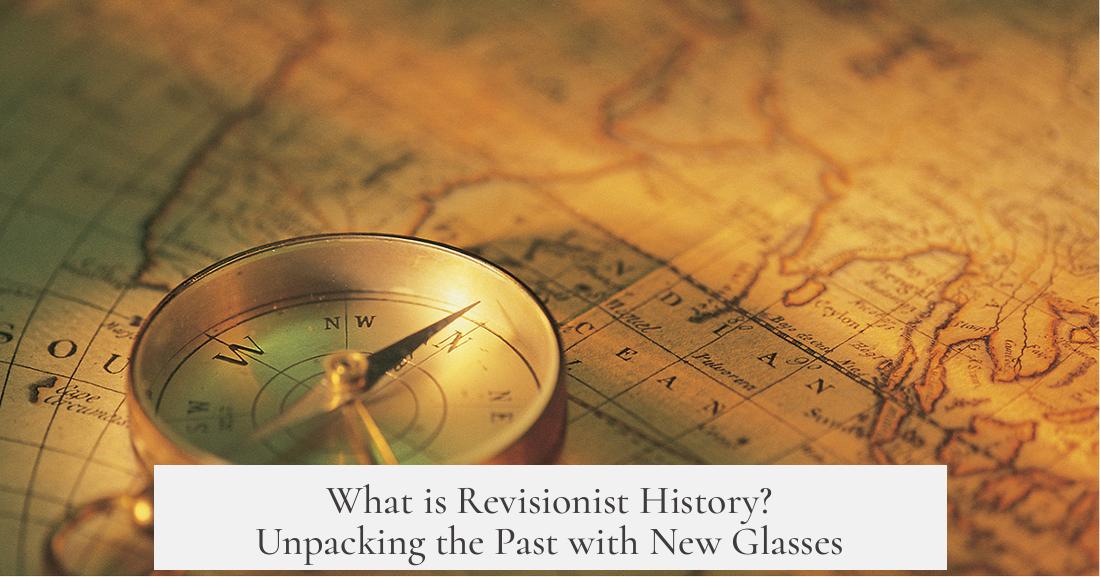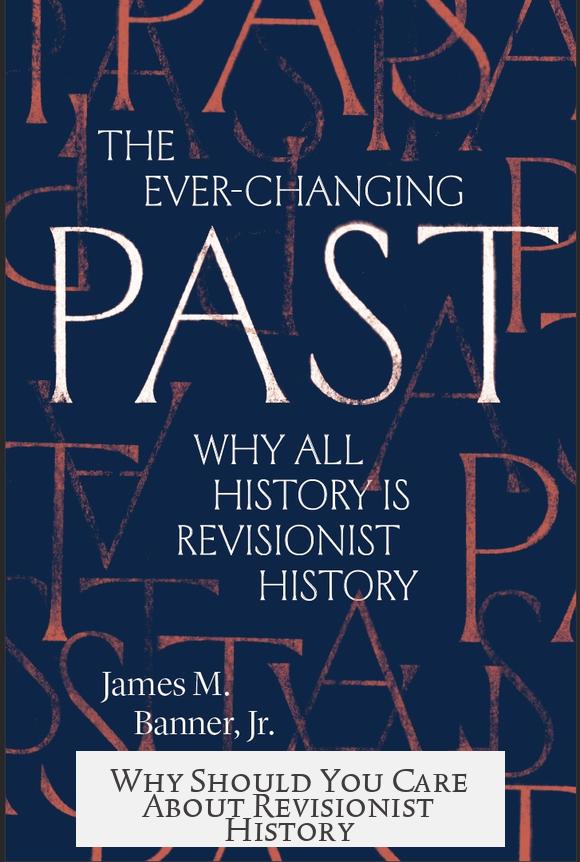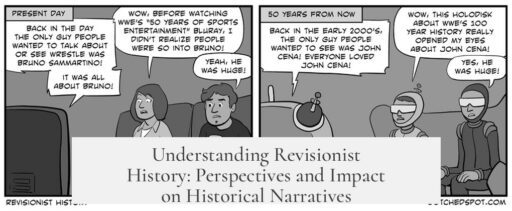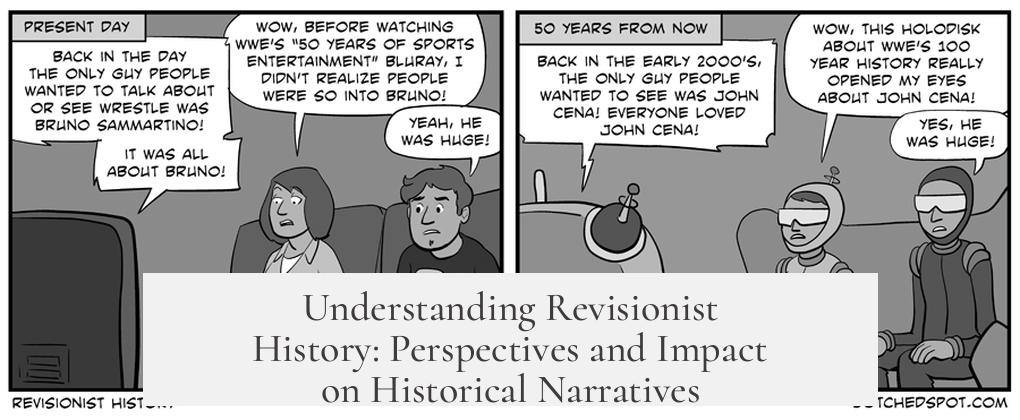Revisionist history refers to the practice of reinterpreting accepted historical events or narratives, often challenging conventional views and offering new perspectives based on evidence or different viewpoints. This approach can be positive, correcting biases and errors, or negative, introducing new biases or distortions.
The term ‘revisionist history’ means revising traditional accounts of history. It questions long-held beliefs and recasts events through different lenses. Revisionism can uncover overlooked voices, like those of women, minorities, or indigenous peoples, providing a fuller understanding of the past.
Positive revisionism improves historical accuracy by correcting significant mistakes in past interpretations. Examples include challenging histories written with imperialist or racist biases. It also involves adding social and cultural contexts to events usually studied from political or military angles. This broader approach enriches historical knowledge.
On the other hand, negative revisionism misrepresents or denies established facts. It sometimes aims to serve political or ideological agendas. For example, denying the Holocaust or the Armenian genocide falls into this category, as does promoting one nation’s history at the expense of others. Such revisionism harms the credibility of historical study.
There is ambiguity in how users apply the term. Historians may praise a work as revisionist for expanding understanding, while others may criticize the same work as revisionist for challenging orthodox views. Non-experts often use “revisionist” negatively to imply that a new interpretation is suspicious or unreliable.
- Revisionist history revises accepted historical narratives.
- Positive revisionism corrects biases and includes marginalized voices.
- Negative revisionism distorts facts to promote specific agendas.
- The term is used variably by historians and the general public.
What is Revisionist History? Unpacking the Past with New Glasses

Revisionist history is, simply put, the art (and sometimes the science) of revisiting and reshaping how we understand the past. It doesn’t mean rewriting history with a mischievous grin but refers to changing accepted interpretations or offering fresh perspectives on historical events. Imagine history as a giant jigsaw puzzle where new pieces or different views can suddenly make the picture clearer—or blurrier, depending on who’s doing the puzzling.
It’s like rewatching a classic movie but realizing you missed half the jokes—or worse, the plot twists. Revisionist history shines a light on those blind spots and challenges the “established” narratives.
The Bright Side: Why Revisionist History is a Lifesaver
History isn’t a dusty old book collecting cobwebs; it’s a living story, and revisionism often acts like the editor who finds typos in the original manuscript. This form of revisionist history is *crucial*.
Take the past century, for instance. Many historians have peeled back layers of imperialist and racist ideologies that skewed earlier historical records. Scholars began to seriously include the voices of women, ethnic minorities, and indigenous peoples—groups that were, frankly, left out of the conversation for centuries. How refreshing (and necessary) is that?
This approach has injected new life into the study of history, broadening it beyond kings and battles to include social and cultural nuances. For example, instead of just memorizing dates of wars, revisionist historians might explore how those wars affected everyday people or shaped cultural identities. It adds depth and texture to history, making it more relatable.
So, revisionist history on the positive side is about correcting significant errors, exposing unrecognized biases, and adding new perspectives. It’s history’s version of spring cleaning—painful but rewarding.
The Dark Side: When Revisionism Gets a Bad Rap
But hold your history books—revisionist history isn’t always sunshine and roses.
Sometimes, it’s weaponized. On this side of the spectrum, revisionist history introduces new biases instead of clearing the fog. Worse still, some revisionist accounts muddy up the waters on purpose or present arguments in bad faith.
A troubling trend is using revisionism to serve narrow interests—a particular nation, group, or faction rewriting history to look better or to hide less flattering facts. Think of denying major atrocities like the Holocaust or the Armenian genocide. This isn’t just academic debate; it twists reality and disrespects victims.
Others might inflate the importance of one ethnicity or nation at the expense of others. This kind of revisionist history seeks validation by rewriting the past in self-serving ways. It’s like rearranging the furniture in the room but leaving giant holes in the floor for everyone else.
The Confusing Middle Ground: Who Decides What’s Revisionist?
This is where things get tricky and sometimes a little messy. The term ‘revisionist history’ carries different meanings depending on who’s using it.
Historians themselves often disagree. One expert’s groundbreaking revision might be another’s dangerous distortion. For example, uncovering suppressed voices might be praised by some as a long-overdue correction but criticized by others who cling to traditional views. It’s a clash between old and new interpretations.
Outside academia, “revisionist” usually tilts negative. It often becomes a slap in the face, a way to dismiss history that challenges popular or mainstream wisdom. Someone might say, “Oh, that’s just revisionist nonsense,” if a new viewpoint threatens their comfort zone.
Among professional historians, however, the term is used with nuance and can carry positive or negative shades—or both. So, understanding revisionist history involves remembering it’s not one-size-fits-all; context rules.
Why Should You Care About Revisionist History?

Good question! Because how we interpret history influences how societies see themselves, shape identities, and make decisions today.
Positive revisionist history helps build a richer, more inclusive past. It ensures we don’t forget marginalized groups and lets us learn lessons from a fuller range of experiences. It can fuel empathy and understanding.
Meanwhile, recognizing dangerous revisionism guards against manipulation and propaganda. We can spot when history is being distorted to serve harmful agendas.
Curious how to approach historical narratives critically? Here are some tips:
- Check sources. Reliable history uses verifiable evidence, not just opinions.
- Look for multiple perspectives. If a story only shows one side, dig deeper.
- Ask why revisions happen. Is it to correct errors or to push an agenda?
- Keep an open mind. Accept new evidence but stay skeptical of oversimplified claims.
Example Case: Women’s History as Revisionism
Take women’s history as a clear example of revisionist history done right. For years, mainstream history ignored women’s contributions, portraying them as spectators rather than actors. Feminist scholars revisited archives, personal letters, and diaries to shine light on heroic women leaders, inventors, and activists that traditional textbooks overlooked.
This contributed not just to equal representation but also reshaped how we understand societal progress and power dynamics. This revision brought a fuller, fairer picture.
Final Thoughts
Revisionist history is not about erasing the past but enriching it. It challenges us to think harder, see differently, and appreciate complexity. Like a detective re-examining clues, revisionist historians dig into the past with courage and curiosity.
Just remember—revisionism can be a friend or foe. Your job as a curious mind is to spot which is which and keep learning. So, next time you hear the phrase “revisionist history,” think beyond the buzzwords. Ask: Who is telling this story? For what purpose? What might they be missing?
In the end, history isn’t static. Our understanding of it should keep evolving, for better or worse, as long as we pursue truth with honesty and respect.




